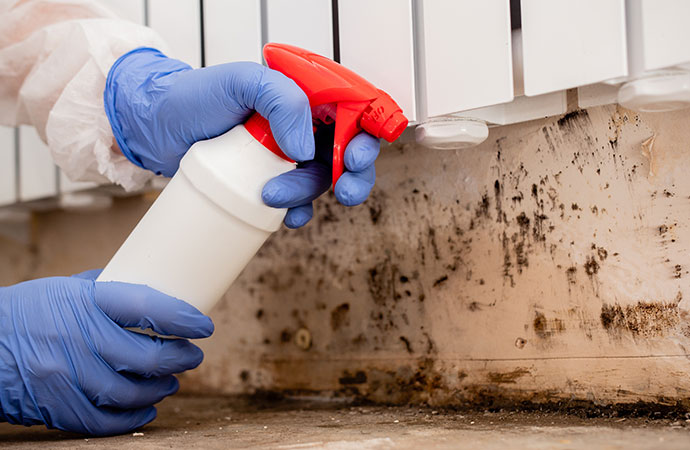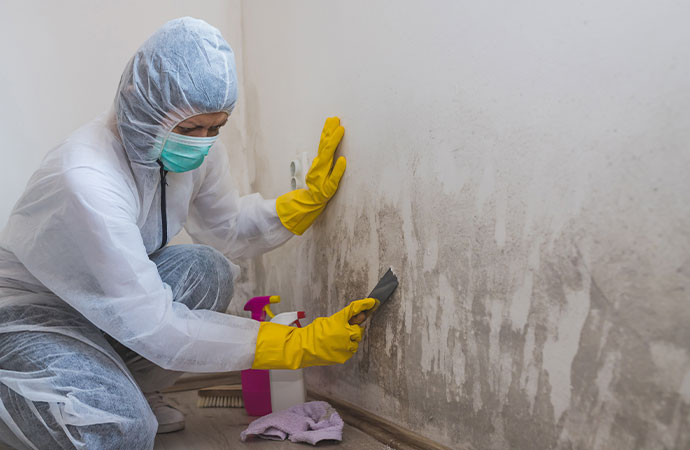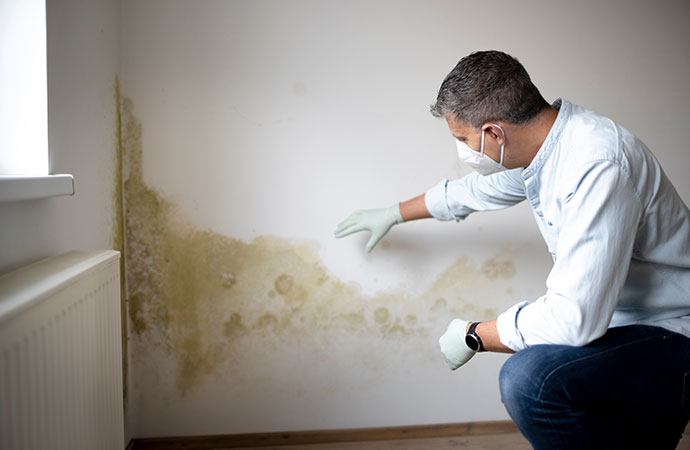“Following a devastating fire, Dayspring’s ability to pull resources from all over the state within hours was incredible. They had over 50 workers onsite within 2-3 hours! We would never have been able to have our students back in school within 2 days were it not for the quick response and the quality of work provided by them. Their quality of work was excellent!”
What’s the Difference Between Mold Removal and Mold Remediation?
Mold is a common issue impacting both commercial and residential buildings. Anytime your property experiences high levels of moisture, there is an increased likelihood of mold growth since mold spores thrive in damp environments. Mold can result in serious health issues for anyone with allergies or a history of respiratory conditions, making it critical that you address mold quickly before it spreads throughout the building.
If you’re looking to get rid of mold, you may be wondering whether you need mold removal or mold remediation. The following discussion will explain the difference between these processes and make it clear why professional mold remediation services are always the best approach to eliminate mold.

What Is Mold Removal?
Mold removal refers to the process of physically getting rid of mold found in your home or business. It involves cleaning and disinfecting surfaces where mold spores are present to remove them. Unfortunately, mold removal is only a short-term solution that fails to address the underlying problem that caused mold to grow in the first place.
Unless the conditions that caused mold to develop are fixed, there’s a good chance the mold will return in the future. That’s because mold can grow just about anywhere damp conditions are present. Even if you remove the existing mold, there are plenty of places for mold to grow back if you fail to address the problems creating a damp environment. Without taking the extra steps involved in professional mold remediation, you place the health of your family or your employees at risk.

What Is Mold Remediation?
Mold remediation provides a more comprehensive, multi-step process that removes existing mold, identifies the cause of the mold and takes the necessary steps to address the cause in order to prevent regrowth. This process provides a more long-term solution that will ensure you restore and maintain safe, healthy conditions in your home or business moving forward.
When you don’t address the problem through professional mold remediation, you’re creating a situation where mold will likely continue growing back over and over again. This will cause you to repeatedly experience all the same problems and health issues associated with mold growth until you work with a mold remediation company that addresses the underlying problem once and for all.
What Is Involved in Mold Remediation?
Mold remediation involves a complex process that includes the following steps:
- Mold Inspection
- Mold Containment and Moisture Control
- Mold Removal
- Prevention Strategies

Mold Inspection
The first step in professional mold remediation involves a mold inspection to identify the type of mold present on your property. Before our IICRC-certified crews perform any mold remediation services, we must receive a report from an industrial hygienist who has tested the mold on the premises to identify the type of mold that is present.
Montana law requires independent assessment/testing by an industrial hygienist who creates a mold remediation protocol before any work begins. Once we receive the hygienist’s report, we formulate a plan to tackle each identified mold type, helping direct our tailored remediation approach.
Mold Containment and Moisture Control
There are certain preliminary steps that must be taken before the mold can be removed from your property. First, mold must be contained to prevent it from becoming a more widespread issue. When mold spores are disturbed, they will travel by air to every corner of your home or business. This can take a small problem and turn it into a much larger one. Before mold is removed, negative-air containment systems and air scrubbers are used to trap the mold spores and prevent them from spreading.
It’s also important to address the source of the water causing mold growth prior to removing the mold. All repairs will be performed to fix leaks, close openings allowing water to enter from outside and address any other problems causing high moisture levels. Then, specialized equipment will be used to dehumidify areas containing mold to restore moisture levels that are low enough to prevent future mold growth.
Mold Removal
Once the water source has been addressed, mold has been contained and proper moisture levels have been restored, the mold removal process will begin. Mold removal involves the following steps:
- Specialized cleaning solutions are used to disinfect affected areas and remove mold from surfaces
- Porous materials that can’t effectively be cleaned will be removed
- Damaged structures such as drywall, insulation and flooring will be repaired or replaced as needed
- HEPA air filters will clean the air and remove any lingering mold spores
- Antimicrobial agents will be applied to surfaces to provide additional protection against regrowth
- Mold levels will be monitored to ensure they return to a normal range
Prevention Strategies
The final step of the mold remediation process involves implementing prevention strategies to ensure mold doesn’t return. After mold removal, all affected areas are inspected for any signs of remaining mold or moisture problems, and air quality testing may be conducted to confirm that mold levels are remaining within safe limits. In addition, moisture meters will be used to ensure all building materials are adequately dried and to ensure elevated moisture levels haven’t returned.
While these initial measures will ensure your home or business is mold-free and proper moisture levels have been restored, additional preventive maintenance will be performed to eliminate the risk of regrowth. This includes ongoing inspections and maintenance of building systems (HVAC, plumbing, roofing, etc.) to identify and address potential moisture issues before they result in mold regrowth. In addition, you will be educated on how to maintain a mold-free environment, including the importance of addressing leaks and moisture problems promptly.
Dayspring Restoration Can Address Mold Issues in Your Home or Business
If you need to address a mold problem in Montana, Dayspring Restoration can help. We’re the leading mold remediation provider throughout Montana, including Bozeman, Missoula, Livingston, Butte and Billings. We provide comprehensive mold remediation services for commercial and residential properties and have the experience to address any mold issue you may have, regardless of the scope of the problem.
Our team of IICRC-certified crews have more than three decades of experience. We use the most advanced techniques and equipment, ensuring your mold remediation services are performed according to industry best practices. Our team offers 24/7 emergency response services and will arrive shortly after receiving your call to begin work. When you choose Dayspring for your mold remediation services, you’ll have peace of mind that the job is performed correctly and that healthy conditions are restored at your home or business.
Contact us today to schedule an appointment. Dayspring Restoration serves customers throughout our Montana service area, including Bozeman, Missoula, Livingston, Butte and Billings.














